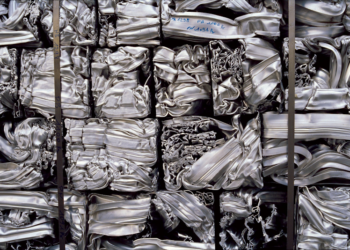Wooden packaging is an ecological and sustainable alternative to traditional plastic packaging in Alabama. This choice is not trivial, because wood offers many advantages both environmentally and practically, but it can reduce the need for dumpster rentals. In this article, find out in detail why wood packaging is a promising solution to meet current sustainability challenges.
Sustainability and biodegradability
Wooden packaging stands out for its natural durability. Unlike plastics which can take hundreds of years to decompose, wood is a biodegradable material that decomposes naturally, without leaving toxic residue in the environment. After use, it can be composted or recycled for reuse, in order to reduce waste and promote a circular economy.
Renewable and abundant resource
Wood is a renewable material and can improve waste management practices. It can be grown and harvested sustainably. Many reforestation programs ensure that for every tree cut down, several more are planted. This ensures responsible forest management and preservation of forest ecosystems. By opting for wooden packaging, you contribute to the fight against deforestation.
Versatility and resistance
Wood packaging comes in a variety of shapes, sizes and styles to meet the needs of each product. Whether for packaging food products, electronic products, furniture or other consumer goods, wood offers a versatile and adaptable solution. Additionally, wood is inherently resistant to impact and damage, providing reliable protection during transportation and storage.
Ecological image and marketing
Using wooden packaging can strengthen a company’s brand image as a player committed to sustainable development. Consumers are increasingly aware of environmental issues and are attracted to brands that adopt environmentally friendly practices. By choosing wood packaging, companies can communicate their commitment to sustainability and attract customers who are concerned about the environmental impact of their purchases.
Innovation and design
Wood packaging offers opportunities for design innovation and creativity. Artisans and designers are exploring new techniques and technologies to make aesthetic, functional and innovative wooden packaging. Techniques such as laser cutting, engraving and carving enable the design of bespoke packaging that stands out on store shelves and attracts consumers’ attention.
Reduction of carbon footprint
Wood production requires less energy than plastics, leading to reduced greenhouse gas emissions and garbage creation. Additionally, wood stores carbon throughout its lifespan in ways that mitigate climate change. By opting for wooden packaging, companies can minimize their carbon footprint and participate in the fight against global warming.
Low cost
Wooden packaging is more economical than other packaging options. Wood is an abundant and inexpensive material. It is an attractive option for businesses aiming to reduce their packaging costs, while maintaining the quality and protection of their goods.
Compatibility with international standards
Wooden crates and pallets are commonly used to transport goods across the world due to their strength and stability. Additionally, wooden packaging complies with international shipping and transportation standards.
Contribution to the local economy
By favoring local wood suppliers, local companies of Alabama like Dumpster HQ Birmingham support local communities and create jobs in rural areas. This contributes to local economic development by promoting forestry and wood processing industries. In addition, the use of these woods reduces transport distances, which reduces CO2 emissions associated with the transport of materials.
The use of wooden packaging constitutes an ecological and sustainable option to meet product packaging requirements, while preserving the environment.





